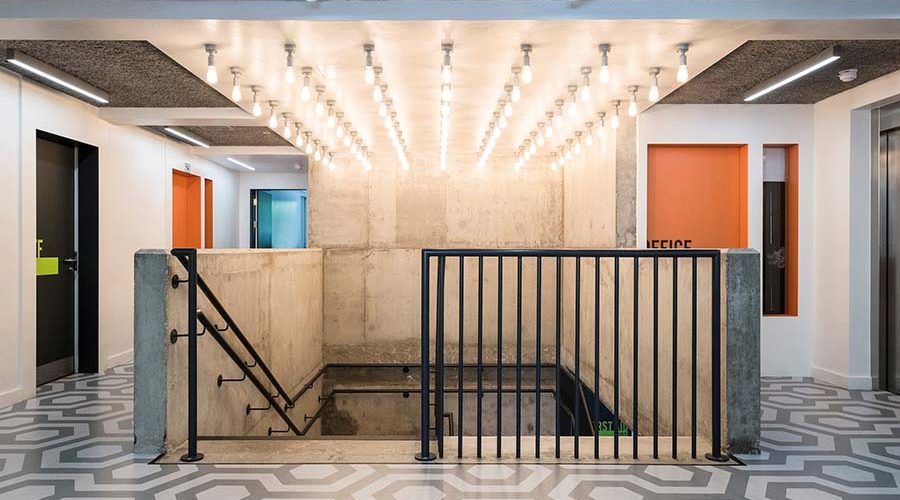Education is a top priority and a ‘moral duty’ for the Government. Academy trusts and local authorities are already preparing to get all pupils physically back to school in September not only for knowledge acquisition but also to satisfy the socialisation needs of young people, says Ben Hancock, Managing Director at Oscar Acoustics.
Oscar Acoustics
Schools are intended to be arenas of learning, debate and development, where young minds accrue the information and skills needed to equip them for the future. Unfortunately, COVID-19 has prompted a sea change within the planning of classrooms, sports halls, lecture theatres and corridors to ensure social distancing protocol is maintained. What’s certain is students will need to be educated in smaller groups with more space.
Yet, the acoustic conditions in these repurposed spaces and its effect on teaching and learning is an oft-overlooked issue, turning classrooms into sonic battlegrounds. A recent study by Jacksons Fencing found only 30% of specifiers have used acoustic solutions for school projects.
Noise pollution has a significant impact on health and learning. Several studies have shown that long exposure to consistent noise reverberation, associated with poor classroom acoustics, negatively affect the teaching and learning processes.
One study found, on average, speech intelligibility in just the fourth row of a classroom is a mere 50%. If students can only hear half of what their teacher is saying, how are they expected to learn and retain information? The noise also has a negative impact on pupil behaviour, affecting the ability to pay attention and increasing unruliness. With class sizes rising and social distancing measures in place, it’s likely this problem will only get worse.
While noise can be a difficult issue to address, the utter subjectivity of its nuisance quotient can lead to a host of physical health problems, meaning significant noise doesn’t just disrupt lessons; it impacts personal wellbeing. As noise levels increase, so do teachers’ heart rates, which causes stress, leading to serious health issues, such as hypertension, heart disease and diabetes.
According to statistics from the Department for Education (DfE), teachers in England were taking 51,000 sick days a week pre-COVID-19, costing schools an estimated £75m a year. Stress is a large contributor to this. In the private sector, workers in noisy open offices take 70% more sick days than those that work from home, so it’s not inconceivable that public sector teachers are suffering the same fate.
Unfortunately, The World Health Organisation’s (WHO) recommendation of 35 decibels (dB(A)) in classrooms, for good teaching and learning conditions, is frequently exceeded. A study in Germany even found the average classroom noise level to be 65 dB(A).
Poor classroom design affects teachers throughout the country. Anik Hussain, a Teacher in Nottinghamshire, got in touch about this challenge. “Every Monday, I teach lessons in a large room, with only hard surfaces and hard furniture. The echoes are a nightmare, and I can rarely get my voice heard. I always leave school that day with a major headache”. This is a great example of how noise can ruin a lesson, without taking into account student behaviour, teacher ability or even outdoor sounds.
The damage caused by poor interior acoustics to a child’s education (and the school’s bottom line) urgently needs to be addressed. However, human cost should be reason enough, as the consequences to teacher health will have a serious impact on life expectancy. In 2011, the WHO reported noise contributed to 1.7 million years of life lost a year in Europe.
Noise pollution in schools is harmful, unnecessary and easily fixed. School spaces need to be improved through appropriate acoustic design, opening up a world of opportunity through better educational outcomes for students.
To ensure environmental noise pollution doesn’t impact student learning and staff health, headteachers, school governors and local authorities need to put noise pollution at the top of the agenda when consulting architects and specifiers. Acoustics should be considered from the start in any new build, while refurbishment of existing facilities also needs to be a top priority.
Many acoustic solutions are simple to install and cost-effective, and will make a massive difference to children’s education. At a school we recently worked on in Central London, there was a room in which four classes were taught at the same time. With the hard surfaces, the reverberation time was extremely high, so you can imagine the cacophony of four sets of children and teachers all talking at once; teachers reported 90 dB(A) was not uncommon. We installed one of our decorative acoustic ceiling sprays in under two days, cutting reverb time comfortably below BB93 regulations for acoustic
design of schools.
Ultimately, we must sound the alarm about classroom reverberation noise and encourage schools and local authorities to take the initiative to tackle it head-on. Change can only come about through fully understanding the breadth of problems associated with poor acoustics and hearing accessibility in learning environments.










